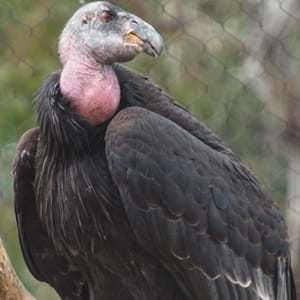

There are many species of Old World vulture, varied and disparate as the regions they call home.

Andean condors are second only to the wandering albatross in wingspan, at 3.5 meters or 11 feet 6 inches. The Andean and California condor have the distinction of being the largest flying land birds of the Western Hemisphere. Notable among these followers are California condors and king vultures, who often bully first-on-the-scene, smaller vultures.Īndean condors and California condors are the only two species of condor in the world. Other species of vulture are frequently spotted following turkey vultures in particular, but also greater and lesser yellow-headed vultures and each other in pursuit of a meal. While not all New World vultures share this olfactory superpower, others benefit from it. Three species of New World vulture - turkey vultures and greater and lesser yellow-headed vultures - rely on sense of smell, a fairly unique trait in the avian world.Ī turkey vulture can smell a carcass more than a mile away and has a notably large olfactory lobe for its size. Turkey vultures and black vultures in particular don’t have beaks that are ideal for tearing into a carcass, and have been observed benefitting from larger species, such as the Andean or California condors and king vultures, taking their share first. Where their territories overlap, these New World vultures often interact over a meal. In South and Central America are king vultures (Sarcoramphus papa) from northern Argentina to southern Mexico the greater yellow-headed vulture or forest vulture (Cathartes melambrotus) inhabiting South America’s lowland tropical forests the lesser yellow-headed vulture or savannah vulture (Cathartes burrovianus) from Mexico spanning throughout South America and the Andean condor (Vultur gryphus), soaring the breadth of the Andes Mountain range and the adjacent coast from the bottom tip of Tierra del Fuego in the south, to Venezuela and Colombia in the north. North America plays host to the black vulture (Coragyps atratus), spanning from the Northeastern United States all the way south to as far as Peru, Chile and Uruguay the turkey vulture (Cathartes aura) who calls the skies from southern Canada to the southern-most tip of South America home and the California condor (Gymnogyps californianus), whose range has unfortunately shrunk to a region encompassing the southwestern US and northern Mexico. Keeping their very different ancestors in mind - eagles and hawks with vultures of the Eastern Hemisphere, and (maybe) storks with vultures of the Western Hemisphere - their differences become more obvious and explainable. Many have large wingspans (the better to soar with), and featherless faces (the better to eat rotting carcasses with, according to one theory).Īnd each evolved to fill a vital part of the ecological web, breaking down and consuming what might otherwise rot and contaminate the surrounding area.įrom here, there are almost exclusively differences. They’ve all evolved highly-acidic stomachs to tolerate rotting and diseased carrion. They all scavenge, though they find their carcasses differently. In the Venn diagram of Old and New World vultures, the space they overlap is small. New World vultures are in the family Cathartidae, and are believed to have evolved from storks (though this is debated in the halls of ornithology). Old World vultures are in the family Accipitridae, and closely related to hawks and eagles. One of the most fascinating things about New and Old World vultures is that they are an example of convergent evolution they evolved separately, from separate genetic ancestors, to fulfill similar ecological niches completely independent of one another. This division is because they aren’t related even a little bit. In the ornithological world vultures internationally are divided into two different groups: Old World, encompassing Africa, Asia and Europe and New World, encompassing the Americas (As of the publishing of this article, this is the preferred zoological nomenclature, and it is therefore used throughout).


 0 kommentar(er)
0 kommentar(er)
